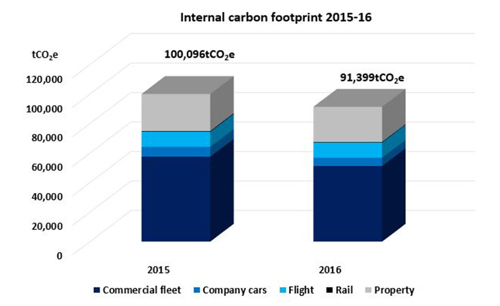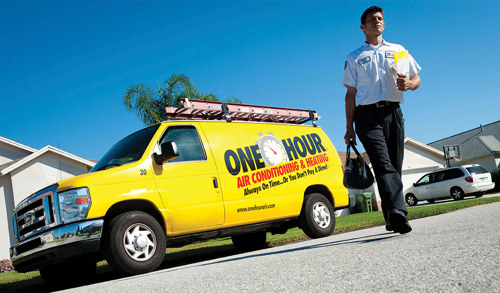Here at Centrica, we believe climate change is one of the greatest global challenges facing society.
That’s why we’re helping to build a lower carbon future through innovation, technology and cultural change – whether it’s providing innovative products and services that help customers cut their energy consumption, investing in new technologies to reduce emissions from sourcing and generating energy, or embedding sustainable behaviours that can help lower our internal carbon footprint.
Over the years, I’m proud that we’ve reduced emissions across all three of these areas but today, I wanted to talk specifically about the progress we’re making towards our ambitious internal carbon footprint target[1].
So, how have we performed?
I’m pleased to say that last year, we cut our internal carbon footprint by over 8% against our 20% reduction target that’s due to be delivered in 2025 (baseline: 2015). This builds on our 27% decrease in internal carbon footprint which surpassed our 20% reduction target in 2015 (baseline: 2007).

How have we achieved this?
The majority of savings came from our commercial fleet, where emissions fell by over 10%. As part of our continual fleet upgrade in the UK, we replaced 1,700 vans with smaller or more efficient vehicles and we re-mapped over 8,000 engines to make them run more efficiently. We were, however, unable to grow our 113-strong electric vehicle (EV) fleet as the range and lack of charging facilities currently prohibits use on a large-scale, given the thousands of miles our engineers need to drive in order to satisfy the changing needs of our customers. Despite this and having already completed over 500,000 miles of EV driving, we remain fully committed to rolling-out more EVs in the future and we will continue to work with manufacturers in order to make this a reality. In North America, it was great to kick-start our 10-year fleet decarbonisation scheme which includes a fleet renewal programme that has been certified to ISO14001 and will significantly cut tailpipe emissions.

Meanwhile, emissions from our property portfolio declined 5%. We successfully reduced electricity consumption in the UK by upgrading to more efficient PCs, optimising server rooms and decommissioning old equipment. Due to remedial work on our solar panels, we unfortunately has to shut down the majority of our solar generation over summer which contributed to our UK operations missing their property reduction target by 5%. In North America, we installed our Panoramic Power energy sensors in three key offices which will allow us to measure, report and understand our electricity consumption like never before, empowering us to identify energy and emission savings.
At the same time, carbon emissions from collective company travel reduced 6%. As part of this, we promote company cars with lower emissions such as electric and hybrid cars of which we have over 200, and has led to a 15% drop in emissions. As we transition to a more global business, we continue to invest in remote conferencing technology that has contributed to rail travel emissions falling 19% and flight emissions holding flat.
Want to find out more about our commitment to safeguarding the environment?
Explore our Responsibility pages and look out for our 2016 Responsible Business Update which launches next week!